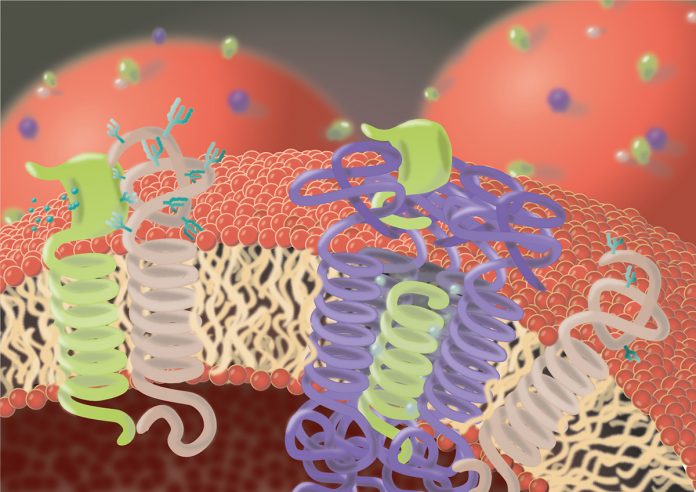Prof Dr Regina Fluhrer from Biomedical Center (BMC), Ludwig Maximilians University of Munich (LMU) & German Center for Neurodegenerative Diseases (DZNE) shares her expertise on the field of intramembrane proteases, focussing on regulation of cellular pathways
Intramembrane proteases are proteins that form pore-like structures in cellular membranes and are capable of cleaving other membrane proteins, their substrates. According to their catalytic centres, different families of intramembrane proteases were discovered (for more details, see the October 2018 edition of Open Access Government). Their substrate proteins usually traverse the membrane once with a so-called transmembrane domain and constitute additional domains on each side of the membrane. Cleavage by an intramembrane protease within the transmembrane domain, therefore, results in the release of protein fragments to both sides of the membrane. Having lost their association with the membrane, these fragments are able to translocate to other parts of the cell where they may act as messenger molecules and transfer signals in order to regulate certain cellular processes.
The NOTCH receptor is one of these substrate proteins. It is important for many cell differentiation processes, in particular during embryonic development, but also later in life affecting many different cell types and organs including the immune system, the heart and the brain. Expressed on the plasma membrane of a cell the NOTCH receptor senses ligands expressed on the plasma membrane of another, neighbouring cell. Upon binding of the ligand to the receptor, a proteolytic cascade, also known as regulated intramembrane proteolysis (RIP), is initiated. First, a protease cleaves the NOTCH receptor in its extracellular domain, releasing the bulk of this protein part. The leftover of the NOTCH receptor, which is still embedded in the membrane, subsequently undergoes intramembrane proteolysis mediated by presenilin, which is part of a protein complex called g-secretase (read more in the forthcoming July 2019 edition of Open Access Government). This cleavage liberates the intracellular part of the NOTCH receptor from the plasma membrane and allows its passage to the nucleus where it activates genes that, for instance, trigger cell differentiation. This allows cells in a developing tissue to influence the differentiation of their neighbouring cells so that various cell types in a certain tissue, like neurons and astrocytes in the brain, can arise and form organs. Deregulated Notch signalling is implicated in the development of cancers, like T-cell acute lymphoblastic leukaemia and currently, inhibitors of presenilin are tested as potential anti-cancer drugs (read more in the upcoming October 2019 edition of Open Access Government).
The membrane system of mammalian cells not only comprises the plasma membrane, but also a variety of intracellular membranes that subdivide the cytosol in different cellular compartments. Among these compartments, the endoplasmic reticulum (ER) and the Golgi apparatus are crucial for production and sorting of integral membrane proteins. Cholesterol is an important constituent of cellular membranes and, therefore, is required by all cells of the body. Cells can either take it up from the blood, where cholesterol resorbed from food circulates as part of lipoproteins like LDL or synthesise it themselves. The latter requires a significant amount of energy and, thus, synthesis should only take place when cholesterol retrieved from the diet becomes limited. In order to adjust the cellular cholesterol supply, the ER membrane harbours a cholesterol sensor that interacts with SREBP-2, a u-shaped protein spanning the ER membrane twice. Once cholesterol levels in the ER membrane, a place for cellular cholesterol storage, drop, the cholesterol sensor together with SREBP-2 gets transported to the Golgi membrane where SREBP-2 gets cleaved by two proteases. First, S1P cleaves within the loop of the u, producing two separate membrane bound fragments. One of these two fragments gets cleaved by S2P, an intramembrane protease. This cleavage releases a fragment, which travels to the nucleus where it induces expression of the enzymes that are required for cholesterol synthesis. S2P was actually the first intramembrane protease discovered in 1997 and not only enlightened an important regulatory mechanism of human cells but also paved the ground for the concept of intramembrane proteolysis.
After synthesis about half of all proteins are modified by the attachment of sugar moieties, a process known as protein glycosylation. It is important for the function and stability of proteins and is known to affect the three-dimensional configuration of some proteins. The enzymes that transfer sugar molecules to other proteins are referred to as glycosyltransferases and localise to the Golgi membrane. Only recently, we discovered that Signal-Peptide-Peptidase like 3 protease (SPPL3), another intramembrane protease, is capable of cleaving a variety of these glycosyltransferases within their transmembrane domain. This results in release and secretion of the glycosyltransferase domain which comprises the active centre crucial for transfer of the sugar molecules and, thus, reduces the activity of the glycosyltransferases in the Golgi (see illustration). Consequently, protein glycosylation can be regulated via the amount of SPPL3 present in the cell – the more SPPL3 is expressed, the less protein glycosylation occurs and vice versa. Protein glycosylation is important for many physiological and pathological processes, like proper signalling of receptors, cell growth, angiogenesis or tumour metastasis. Therefore, SPPL3 expression may be an attractive cellular switch to regulate such processes and, thus, has the potential to become an attractive drug target in the future.
These examples illustrate that intramembrane proteases are involved in key cellular pathways and deregulation can cause diseases for which to date no cure exists. Based on the fact that proteolytic cleavages are irreversible, it must be assumed that these proteases under physiological conditions are tightly regulated. To further pursue intramembrane proteases as promising drug targets, a precise understanding of these regulatory mechanisms is indispensable and in the focus of current research activities.
Further reading
Steinbuck MP, Winandy S. A Review of Notch Processing With New Insights Into Ligand-Independent Notch Signaling in T-Cells. Front Immunol. 2018 Jun 1;9:1230.
McCarthy AJ, Coleman-Vaughan C, McCarthy JV. Regulated intramembrane proteolysis: emergent role in cell signalling pathways. Biochem Soc Trans. 2017 Dec 15;45(6):1185-1202.
Fluhrer R. A Unique Family of Intramembrane Proteases. Scientia. 2018 Jul 04; 179: 10.26320/SCIENTIA179
Voss M, et al. Shedding of glycan-modifying enzymes by signal peptide peptidase-like 3 (SPPL3) regulates cellular N-glycosylation. EMBO J. 2014 Dec 17;33(24):2890-905.
Please note: this is a commercial profile

Regina Fluhrer
Prof Dr
Biomedical Center (BMC)
Ludwig Maximilians University of Munich (LMU) & German Center for Neurodegenerative
Diseases (DZNE)
Tel: +49 89 440 046 505
regina.fluhrer@med.uni-muenchen.de
www.biochemie.abi.med.uni-muenchen.de/fluhrer_lab/index.html











